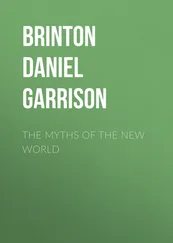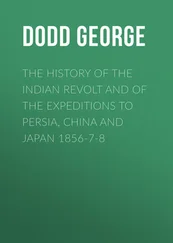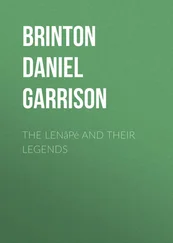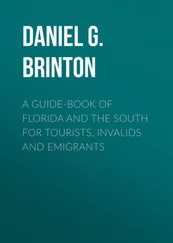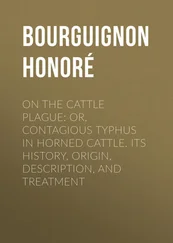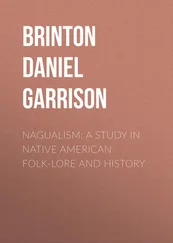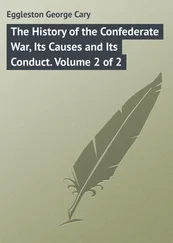Daniel Brinton - Notes on the Floridian Peninsula; its Literary History, Indian Tribes and Antiquities
Здесь есть возможность читать онлайн «Daniel Brinton - Notes on the Floridian Peninsula; its Literary History, Indian Tribes and Antiquities» — ознакомительный отрывок электронной книги совершенно бесплатно, а после прочтения отрывка купить полную версию. В некоторых случаях можно слушать аудио, скачать через торрент в формате fb2 и присутствует краткое содержание. Жанр: foreign_antique, История, История, foreign_edu, на английском языке. Описание произведения, (предисловие) а так же отзывы посетителей доступны на портале библиотеки ЛибКат.
- Название:Notes on the Floridian Peninsula; its Literary History, Indian Tribes and Antiquities
- Автор:
- Жанр:
- Год:неизвестен
- ISBN:нет данных
- Рейтинг книги:3 / 5. Голосов: 1
-
Избранное:Добавить в избранное
- Отзывы:
-
Ваша оценка:
- 60
- 1
- 2
- 3
- 4
- 5
Notes on the Floridian Peninsula; its Literary History, Indian Tribes and Antiquities: краткое содержание, описание и аннотация
Предлагаем к чтению аннотацию, описание, краткое содержание или предисловие (зависит от того, что написал сам автор книги «Notes on the Floridian Peninsula; its Literary History, Indian Tribes and Antiquities»). Если вы не нашли необходимую информацию о книге — напишите в комментариях, мы постараемся отыскать её.
Notes on the Floridian Peninsula; its Literary History, Indian Tribes and Antiquities — читать онлайн ознакомительный отрывок
Ниже представлен текст книги, разбитый по страницам. Система сохранения места последней прочитанной страницы, позволяет с удобством читать онлайн бесплатно книгу «Notes on the Floridian Peninsula; its Literary History, Indian Tribes and Antiquities», без необходимости каждый раз заново искать на чём Вы остановились. Поставьте закладку, и сможете в любой момент перейти на страницу, на которой закончили чтение.
Интервал:
Закладка:
Chief among these, and very favorably known to American readers, is Theodore Irving. 11 11 The Conquest of Florida by Hernando de Soto, 2 vols. 8vo., Philadelphia, 1835; revised edition, 1 vol., 8vo., New York, 1851, with a map of De Soto’s route.
When this writer was pursuing his studies at Madrid, he came across La Vega’s Historia. Intensely interested by the facts, and the happy diction in which they were set forth, he undertook a free translation; but subsequently meeting with the other narratives, modified his plan somewhat, aiming to retain the beauties of the one, without ignoring the more moderate versions of the others. In the preface and appendix to his History of Florida, he defends the veracity of the Inca, and exhibits throughout an evident leaning toward his ampler estimates. His composition is eminently chaste and pleasing, and La Vega may be considered fortunate in having obtained so congenial an admirer. Entering fully into the spirit of the age, thoroughly versed in the Spanish character and language, and with such able command of his native tongue, it is to be regretted that the duties of his position have prevented Mr. Irving from further labors in that field for which he has shown himself so well qualified.
Many attempts have been made to trace De Soto’s route. Those of Homans, Charlevoix, Guillaume de l’Isle and other early writers were foiled by their want of correct geographical knowledge. 12 12 Charlevoix’ scheme may be found in his Histoire de la Nouvelle France; De l’Isle’s in the fifth volume of the Voyages au Nord, and in his Atlas Nouveau; Homans’ is quoted by Warden in the Chronologie Historique de l’Amerique; all in the first half of the eighteenth century.
Not till the present century was anything definite established. The naturalist Nuttall 13 13 Travels into the Arkansa Territory, in 1819, Phila., 1821.
who had personally examined the regions along and west of the Mississippi, and Williams 14 14 Natural and Civil History of Florida.
who had a similar topographical acquaintance with the peninsula of Florida, did much toward determining either extremity of his course, while the philological researches of Albert Gallatin on the Choktah confederacy 15 15 Transactions of the American Antiquarian Society, vol. II.
threw much light on the intermediate portion. Dr. McCulloh, 16 16 Antiquarian Researches.
whose indefatigable labors in the field of American archæology deserve the highest praise, combined the labors of his predecessors and mapped out the march with much accuracy. Since the publication of his work, Dr. J. W. Monette, 17 17 History of the Discovery and Settlement of the Valley of the Mississippi, New York, 1846, vol. I.
Col. Albert J. Pickett, 18 18 History of Alabama, and incidentally of Georgia and Mississippi, vol. I.
Alexander Meek, 19 19 Southern Monthly Magazine and Review for Jan., 1839.
Theodore Irving, 20 20 History of the Conquest of Florida.
Charles Guyarre, 21 21 History of Louisiana.
L. A. Wilmer, 22 22 Life, Travels, and Adventures of Ferdinand de Soto, 8vo., Philadelphia, 1858; an excellent popular compend.—Mr. Schoolcraft, in the third volume of the History of the Indian Tribes, has described from personal examination the country in the vicinity of the Ozark mountains, with reference to the westernmost portion of De Soto’s route.
and others have bestowed more or less attention to the question. A very excellent resumé of most of their labors, with an accompanying map, is given by Rye in his introduction to the Hackluyt Society’s edition of the Portuguese Gentleman’s Narrative, who also adds a tabular comparison of the statements of this and La Vega’s account.
From the failure of De Soto’s expedition to the settlement of the French at the mouth of the St. John’s, no very active measures were taken by the Spanish government in regard to Florida.
A vain attempt was made in 1549 by some zealous Dominicans to obtain a footing on the Gulf coast. A record of their voyage, written probably by Juan de Araña, captain of the vessel, is preserved; 23 23 Relation de la Floride pour l’ Illustrissime Seigneur, Vice Roi de la Nouvelle Espagne, apporté par Frére Gregorio de Beteta; in Ternaux-Compans’ Recueil .
it is a confused account, of little value.
The Compte-Rendu of Guido de las Bazares, 24 24 Compte Rendu par Guido de las Bazares, du voyage qu’il fait pour découvrir les ports et les baies qui sont sur la côte de la Floride; in Ternaux-Compans’ Recueil .
who explored Apalache Bay (Bahia de Miruelo) in 1559, to which is appended an epitome of the voyage of Angel de Villafañe to the coasts of South Carolina in 1561, and a letter from the viceroy of New Spain 25 25 Lettre du vice-roi de la Nouvelle Espagne, Don Luis de Velasco, à sa Sacrée Majesté, Catholique et Royale, sur les affaires de la Floride. De Mexico, le 24 Septembre, 1559; in Ternanx-Compans’ Recueil .
relating to the voyage of Tristan de Arellano to Pensacola Bay (Santa Maria de Galve), are of value in verifying certain important dates in the geographical history of our country; and as they indicate, contrary to the assertion of a distinguished living historian, 26 26 Bancroft, History of the United States, vol. I, p. 60.
that the Spaniards had not wholly forgotten that land, “the avenues to which death seemed to guard.”
Much more valuable than any of these is the memoir of Hernando D’Escalante Fontanedo. 27 27 Memoire sur la Floride, ses Côtes et ses Habitants, qu’ aucun de ceux qui l’ont visité ont su d’écrire; in Ternaux-Compans’ Recueil .
This writer gives the following account of himself: born of Spanish parents in the town of Carthagena in 1538, at the age of thirteen he was sent to Spain to receive his education, but suffering shipwreck off the Florida coast, was spared and brought up among the natives, living with various tribes till his thirtieth year. He adds that in the same ship with him were Don Martin de Guzman, Hernando de Andino, deputy from Popayan, Alonso de Mesa, and Juan Otis de Zarate. Now at least one of these, the last mentioned, was never shipwrecked at any time on Florida, and in the very year of the alleged occurrence (1551) was appointed captain in a cavalry regiment in Peru, where he remained for a number of years; 28 28 Herrera, Dec. VIII., lib. IX., cap. xviii.
nor do I know the slightest collateral authority for believing that either of the others suffered such a casuality. He asserts, moreover, that after his return to Spain he sought the post of interpreter under Aviles, then planning his attack on the Huguenots. But as this occurred in 1565, how could he have spent from his thirteenth to his thirtieth year, beginning with 1551, a prisoner among the Indians? In spite of these contradictions, there remains enough to make his memoir of great worth. He boasts that he could speak four Indian tongues, that there were only two with which he was not familiar, and calls attention to what has since been termed their “polysynthetic” structure. Thus he mentions that the phrase se-le-te-ga, go and see if any one is at the look-out , is compounded partially of tejihue, look-out ; “but in speaking,” he observes, “the Floridians abridge their words more than we do.” Though he did not obtain the post of interpreter, he accompanied the expedition of Aviles, and takes credit to himself for having preserved it from the traitorous designs of his successful rival: “If I and a mulatto,” he says, “had not hindred him, all of us would have been killed. Pedro Menendez would not have died at Santander, but in Florida, where there is neither river nor bay unknown to me.” For this service they received no reward, and he complains: “As for us, we have not received any pay, and have returned with broken health; we have gained very little therefore in going to Florida, where we received no advancement.” Muñoz appended the following note to this memoir: “Excellent account, though of a man unaccustomed to writing, which is the cause of the numerous meaningless passages it contains.” Ternaux-Compans adds: “Without finding, as Muñoz, this account excellent, I thought it best to insert it here as containing valuable notices of the geography of Florida. It is often unintelligible; and notwithstanding all the pains I have taken in the translation, I must beg the indulgence of the reader.” The geographical notices are indeed valuable, particularly in locating the ancient Indian tribes. The style is crude and confused, but I find few passages so unintelligible as not to yield to a careful study and a comparison with cotemporary history. The memoir is addressed, “Tres puissant Seigneur,” and was probably intended to get its author a position. The date of writing is nowhere mentioned, but as it was not long after the death of Aviles (1574), we cannot be far wrong in laΔιονυσιαying it about 1580.
Интервал:
Закладка:
Похожие книги на «Notes on the Floridian Peninsula; its Literary History, Indian Tribes and Antiquities»
Представляем Вашему вниманию похожие книги на «Notes on the Floridian Peninsula; its Literary History, Indian Tribes and Antiquities» списком для выбора. Мы отобрали схожую по названию и смыслу литературу в надежде предоставить читателям больше вариантов отыскать новые, интересные, ещё непрочитанные произведения.
Обсуждение, отзывы о книге «Notes on the Floridian Peninsula; its Literary History, Indian Tribes and Antiquities» и просто собственные мнения читателей. Оставьте ваши комментарии, напишите, что Вы думаете о произведении, его смысле или главных героях. Укажите что конкретно понравилось, а что нет, и почему Вы так считаете.

